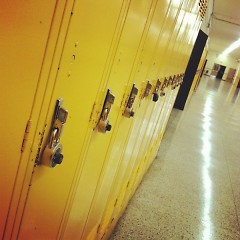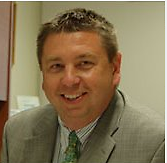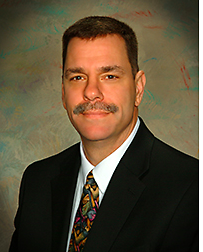Bonding proposals are on the ballot for Grand Rapids, Kentwood and Kenowa Hills public schools that would allow districts to update buildings, enhance district technology in and out of the classroom and provide security upgrades to school entrances. Millage proposals in Kenowa Hills and Wyoming public schools would allow those districts to continue ongoing projects to improve aging school infrastructure.
Kenowa Hills and Kentwood connect with voters
In May 2015, taxpayers voted against bond proposals in both Kenowa Hills and Kentwood public school districts.
Since then, both districts have reached out to voters by conducting surveys, and have made changes which school officials feel have led to better-crafted proposals.
The current Kenowa Hills proposal includes $55 million targeted at improving and expanding infrastructure, enhancing security, expanding classroom technology and revamping its bussing system.
The bond represents an increase of 0.99 mills, or $0.99 on each $1,000 of taxable valuation, over the course of 30 years, which Kenowa Hills Superintendent Gerald Hopkins says is the lowest school millage rate in Kent County.
If the proposal passes, changes to school buildings would include vestibules for secure public entry into the buildings and academic wing expansions to anticipate for community growth, Hopkins says.
Additionally, the two elementary schools, Zinser Elementary and Alpine Elementary, are in need of new gymnasiums, he says.
“Back when they were built, they were built for that era, and so it’s very typical for gymnasiums to also serve as a cafeteria and also have a stage for performances,” Hopkins says.
Hopkins says that this model can’t handle the various purposes the elementary schools need fulfilled during the school day.
“We can’t offer PE [physical education] classes, or other things during the school day, during the lunch period,” he says. “We have to postpone our PE classes because we’ve turned it into our cafeteria.”
A district-wide goal for Kenowa Hills is to bring one-to-one technology to all students, matching each student up with his or her own individual computer or tablet.
In 2010, a bond proposal allowed the district to purchase 1,800 Google ChromeBooks, which allowed grades 6-12 to go fully one-to-one. They have since expanded ChromeBook use to fifth grade, and currently have 30 iPads shared between two elementary school classes.
The hope for the 2015 bond is not only to retain the goal of establishing one-to-one technology, but to plan for replacement, Hopkins says.
“If we don’t have a plan for replacing that, we fall back,” he says. “We won’t be able to use them for very much longer. They will have outlived their life as a tool.”
The bussing system is facing a similar problem, Hopkins says, as old busses are in need of replacement. He says that half of the busses are over 10 years old, and the district will have to replace at least four in the next fiscal year.
Hopkins says he hopes these replacements can come through a bond proposal rather than the school’s general fund, which would take away from per pupil spending. He says a bus system is not required for a public school district, but that for a large district like Kenowa Hills, it’s important to maintain.
“With a district with our square miles, it’s almost a requirement,” Hopkins says. “Our parents expect that; they anticipate that.”
Kentwood Public Schools has proposed a bond of about $64 million following survey results that indicated public interest in updating district technology and implementing safety upgrades.
The survey also showed a need to increase communication, and the school has fact sheets and videos available on its website. The estimated average millage rate that must be levied to retire the bond within 29 years is 1.40 mills, or $1.40 on each $1,000 of taxable valuation.
Kentwood is hosting its third and final public forum on the bond issues on Oct. 29 at 5 p.m. at Challenger Elementary.
Grand Rapids Public Schools
For Grand Rapids Public Schools, district-wide upgrades are long overdue, says GRPS Yes Committee Chair David Doyle.
“We have, believe it or not, a 1978 Commodore computer that runs the heating and ventilation systems for the school, and we don’t dare turn it off,” Doyle says.
The proposal includes $175 million for remodeling or re-equipping school buildings, athletic fields, playgrounds and other facilities, as well as various security and technology improvements.
The estimated annual millage rate would be 2.12 mills, or $2.12 on each $1,000 of taxable value, for 26 years from the issuing of the bond.
Technology in the classroom is due for a renaissance, Doyle says.
“Much of the tech our teachers and students use is 10 years old,” he says. “Think back 10 years, what they used to learn and teach with.” Ten years ago in 2005, changes in technology included the launch of YouTube and USB drives beginning to replace floppy disks.
Security upgrades would impact nearly every building in the district, Doyle says.
“We have many old buildings with a lot of entrances, and they’re unsecured entrances in that there are no cameras,” he says.
The theme of the GRPS Yes campaign is “leadership that works,” which Doyle says is reflected in responsible leadership at GRPS.
“Right now, this current superintendent Teresa Weatherall Neal, and this current board, have demonstrated to the public that they are capable stewards of tax dollars,” he says. “They’re not arguing. They’re not fighting. They’re doing what they need to be doing.”
The Grand Rapids Taxpayers Association group is advocating for a "No" vote on the proposal. With backing from Americans for Prosperity (AFP), a national conservative advocacy organization, the group has been sending robocalls around Grand Rapids, urging people to vote against tax hikes. Friends of GRPS held a press conference on Wednesday, Oct. 21, calling the robocalls misleading.
The group has advocated against other tax-related legislation, including with an attempted law suit against the city for an income tax proposal for street and sidewalks that passed in May 2015.
A healthy school means a healthy community, Doyle says.
“What happens with good neighborhood schools is you get good neighborhoods, and with good neighborhoods you get a good community,” he says. “This community deserves a good school system that goes right along with its rising potential.”
Millages renewals
Kenowa Hills Public Schools is proposing an operating millage renewal to continue a levy of 18 mills on all property for the next 10 years. The current millage is set to expire in 2016, and the estimated revenue the district will collect in 2017 if the millage is approved and levied is just over $9 million, which will help retain costs of current projects.
Wyoming Public Schools is proposing a building and site sinking fund tax levy, which will levy .50 mills, or 50 cents on each $1,000 of taxable valuation, from 2016 to 2025.
The tax levy would generate about $423,846, which Wyoming Public Schools Superintendent Tom Reeder says will keep district infrastructure up to date.
It’s a small amount, Reeder says, that will go a long way to keep up with wear and tear of roofs and parking lots and other essential structures.
The levy may also go toward some security additions such as door locking systems and push bars, as well as improvements to handicapped access.
“We have some things that we are pushing that will be difficult to handle without a little extra money to do that,” Reeder says.
Reeder says investment in a school district is good for the community, increasing local property values and attracting families and businesses to the area.
“Almost with every school the property values stay very strong in that area,” he says. “It’s keeping your values up.”
The Rapidian, a program of the 501(c)3 nonprofit Community Media Center, relies on the community’s support to help cover the cost of training reporters and publishing content.
We need your help.
If each of our readers and content creators who values this community platform help support its creation and maintenance, The Rapidian can continue to educate and facilitate a conversation around issues for years to come.
Please support The Rapidian and make a contribution today.


